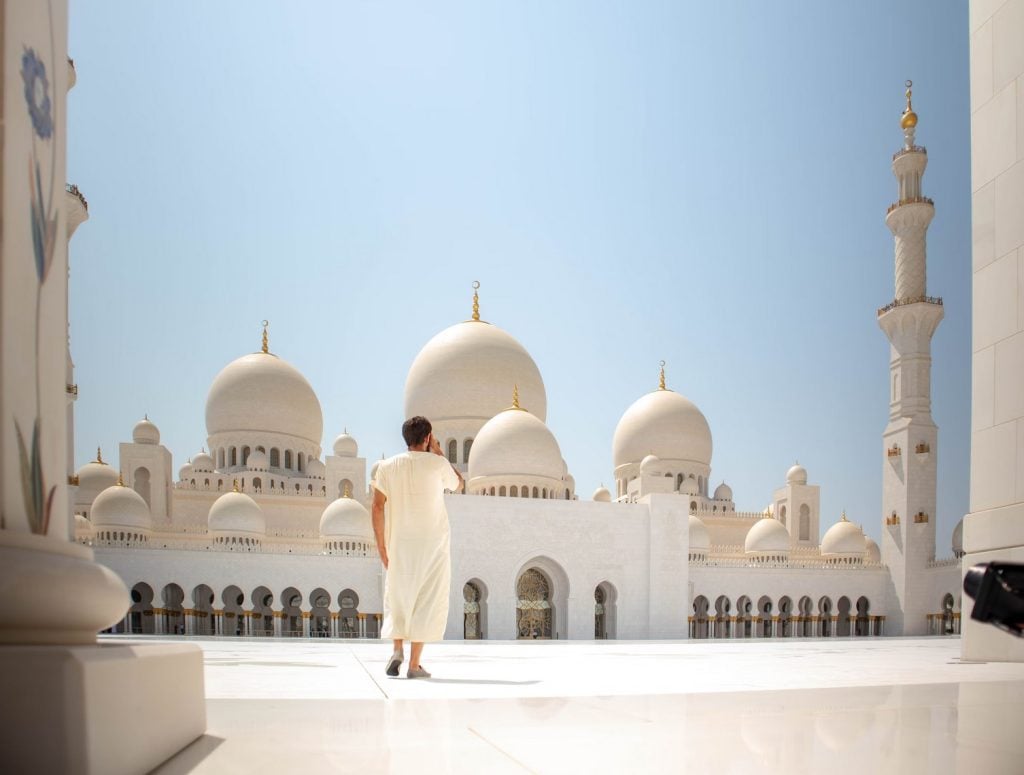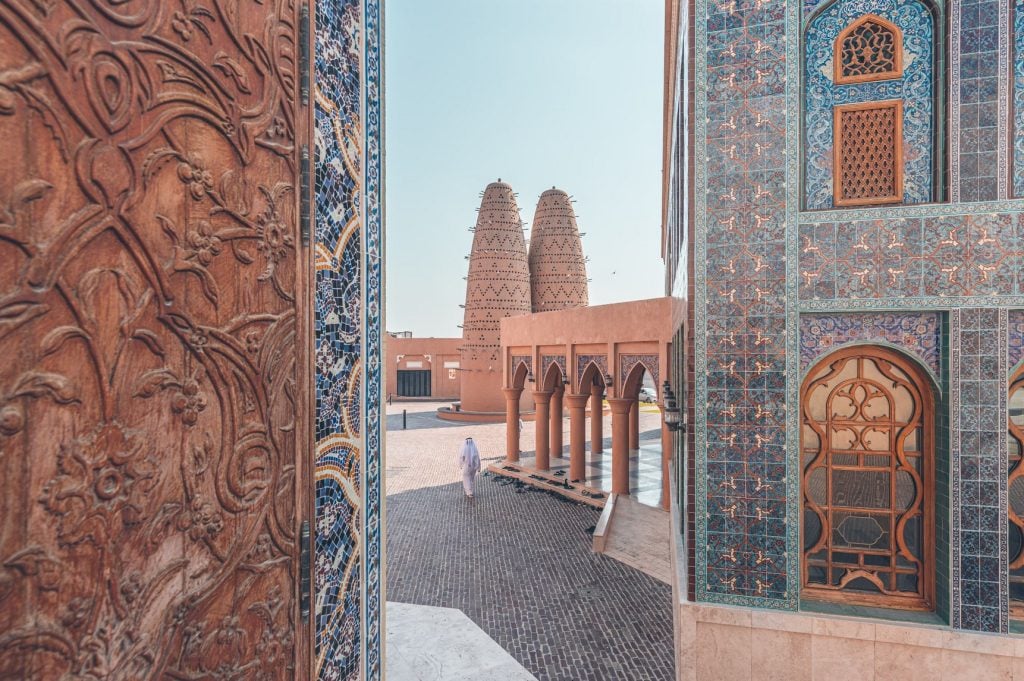Step aside Europe, America and Asia, the Middle East is quickly becoming one of the hottest regions in the world!
And what’s not to love! From the hospitality to the ancient history, the opulent lifestyles, and let’s not forget, incredible foods, it’s the perfect destination for travellers seeking unique travel experiences.
Countries across the region have experienced a surge in travel during the first six months of 2024, indicating that regional politics won’t stop travellers from getting their taste of the Middle East.
According to OAG’s largest industry report, the Middle East’s aviation market is set to triple in size over the next decade as new airlines come on board and destinations carry out massive infrastructure developments to attraction visitors. Increased air competition is also likely to lower airfares, boosting visitor appeal across the region.
Markets expected to experience the fastest growth are Qatar, the UAE and Saudi Arabia. This is unsurprising given that in the first six months of 2024, all three of these destinations have experienced record tourism growth.
Saudi Arabia

The Kingdom of Saudi Arabia is ruling over tourism to the Middle East with an incredible 60 million domestic and international tourists visiting during the first half of 2024. Each of these tourists didn’t hold back on their spending, with over $38.1 billion generated in the six months to June.
According to the country’s tourism board, the 60 million visitors were divided into 44 million domestic travellers and 15 million international tourists who spent $24 billion during their visit.
The smashing result can be attributed to a mix of initiatives over the last few years including the roll out of electronic visas, inviting marketing campaigns, new flights to popular destinations, increase in religious pilgrimages and attracting more cruise ships.
Not resting on their laurels, Saudi Arabia’s tourism leaders are hoping to attract over 150 million visitors by 2030. Plans are already in motion to make this ambitious goal a reality, with the Kingdom hosting major sporting events in the coming years (including the 2034 FIFA World Cup hopefully), launching the country’s own cruise line and building the Middle East’s largest waterpark with 22 distinct attractions.
A major contributor to Saudi Arabia’s tourism growth over the coming years will also be the launch of Riyadh Air, the Kingdom’s second flag carrier after Saudia. The airline will be based out of Saudi Arabia’s capital and largest city, Riyadh, and will operate both domestic and international flights to over 100 destinations in the Middle East and six continents.
UAE

The UAE is securing its position as the region’s top tourism hub with both Dubai and Abu Dhabi experiencing a surge in tourism during the first half of 2024.
While Dubai welcomed a record 9.31 million overnight visitors during the six months, a 9% increase on the 8.55 million that visited over the same period last year, Dubai International (DXB) welcomed a whopping 44.9 million guests during the same period. The Emirate even topped the charts on TikTok beating the likes of London and Paris. According to Dubai Department of Economy and Tourism (DET), the results from January to June this year put the city on track to outperform last year’s incredible 17.15 million overnight visitors.
Dubai’s success for the period came from a rise in international visitation which was bolstered by hosting a range of global events including The Leisure Show Dubai, Dubai Shopping Festival, Ramadan in Dubai, Golf’s DP World Tour Championship, Emirates Dubai 7s and more. The boost in tourism can also be attributed to the city’s ongoing culinary reputation, the opening of new luxury properties including a Marbella Resort and the One&Only Za’abeel Hotel.
One hour down the road in Abu Dhabi and the tourism appeal is just as strong, with 13.9 million travellers flying through the city’s five airports in the first half of 2024. The figure represents an astounding 33.5% increase compared to the same period last year.
The boost in travel through the city, which was recently recognised as being home to the 10th best attraction in the world, was attributed to a 24.3% increase in flight movements. Around 84,286 flights took off and touched down in Abu Dhabi between January and June this year, up from 67,835 flights during the same six months in 2023.
According to Gulf News, the increase in airport traffic was likely due to two new airlines launching flights and a range of other carriers expanding their network to the city.
Abu Dhabi’s flag carrier, Etihad Airways, benefited from the boost in tourism, flying 8.7 million passengers in the first six months of the year, an increase of almost 40% on the 2.5 million passengers during the previous year.
Qatar

Qatar continues to kick tourism goals and it’s all thanks to the state’s ongoing relationship with soccer (or football, depending on where you are in the world) fans.
Hosting the AFC Asian Cup earlier this year contributed to a surge in international visitors to Qatar, with 28% more arrivals in the first six months of 2024 compared to the same period last year. Around 2.6 million people visited the growing sports hub between January and June, the majority of which (nearly 30%) came from Saudi Arabia. Other key destinations included India, Bahrain, the UK, Kuwait, Oman, Germany, the USA, the UAE and Italy.
In line with growing visitation, Qatar’s hospitality industry witnessed a large spike in occupation with 4.9 million room nights booked during the first half of 2024, up 28% on the same period last year.
While major sporting events have put Qatar on the global stage, the state’s tourism success can also be contributed to the new visa system is also likely to have tempted international visitors along with Qatar Airway’s evolving inflight services.
Hoping to keep visitation on an upward trend, Qatar’s tourism leaders have negotiated with cruise lines such as Celestyal Cruises to bring tourists in by sea, while simultaneously tempting travellers with attractions that will rival Disney’s Magic Kingdom and pitching for future sporting events such as the 2026 Rugby Nations Championships.
Bahrain

We’re going to Bahrain baby! Visitation to the Kingdom between the two seas was up 13.2% during the first half of this year to 4.6 million passengers. The increase can be attributed to the 9.4% increase in air traffic movement which came from Gulf Air adding services on popular routes and new airlines, such as Pakistan’s Fly Jinnah, entering the market.
In an announcement, the Gulf Air Group said the national carrier, Gulf Air’s passenger volume was up 8.5% to 3.1 million compared to the same six months last year.
The group acknowledged Gulf Air’s strengthened Asia Pacific and European network, saying it contributed to the jump in passenger volume. Among the carrier’s newest services include flights between Bahrain and China’s Guangzhou and Shanghai, as well as an additional service to Munich in Germany.
Gulf Air’s network also saw the resumption of flights to Iraq’s Baghdad and Najaf and increased flight frequencies to Qatar’s capital of Doha as well as Omani’s capital of Muscat. In Europe the carrier’s increased flights to the UK’s Manchester as well as Italy’s Milan and Rome while adding new seasonal services to Alula in Saudi Arabia, Geneva in Switzerland and Rhodes in Greece.
Traffic to Bahrain is expected to continue climbing throughout the year, especially after the Kingdom was crowned top wedding destination in the Middle East.
Oman

Over in the Sultanate of Oman, travel surged with nearly 7.07 million travellers passing through the country’s airports during the first half of 2024. This was a significant 11.9% increase on the 6.3 million passengers during the same six months last year. The increase is no doubt due to the Sultanate’s recent efforts to attract more visitation including its ‘green spaces’ initiatives, new rail link with Abu Dhabi and investment in high-end hospitality.
According to Oman Observer, the increase in passengers was aligned with an increase in flights to the Sultanate which jumped from 49,013 between January and June 2023 to 53,316 flights in 2024.
Muscat International Airport welcomed most of Oman’s visitors with 6.3 million passing through its gates, an 11.8% jump on the same period last year. Close behind was Salalah Airport with a 10.9% growth in passenger traffic with 628,951 incoming visitors travelling on 4,688 flights, up 7.3% on flights to the airport during the first half of 2023.
The Sultanate’s hospitality industry is reaping the rewards from the uptake of visitation, bringing in RO119.49mn in revenue during the first half of 2024. This was up 8.6% on the corresponding period last year.
According to an article in Zawya, 3-to-5 star hotels welcomed 1.04 million guests by June 2024, up 10.7% on last year. Hotel data indicated that European visitation increased the most with a 19.2% jump on the first half of 2023, followed by Asian guests which was up 12.6%, Arab guests outside the Middle East at an 11% increase and guests from other Gulf countries which was up by 3.7%.
Türkiye

Is it the Mediterranean beach, the cosmetic procedures or ancient sites? Perhaps it’s a mix of all three that’s contributed to a 13.9% jump in tourism to Türkiye during the first six month of this year.
According to results published by the Ministry of Culture and Tourism, around 26.1 million people visited the Republic, injecting more than $23.7 million in the economy, up 9.3% on last year. Turkish Airlines also recorded a 7.7% increase in passenger capacity in Q2 of 2024, carrying 22.1 million passengers.
Given the positive half-year result, Türkiye’s leaders are confident that the country will hit its end-of-year target of doubling the result and reaching 60 million visitors. New luxury hotels such as the Seven Radisson brand and the launch of the country’s new innovative visa service will no doubt aid the country in reaching its tourism goals.
Türkiye’s biggest visitor markets are Russia which grew by 3%, Germany which was up 9% and the UK which jumped by 19%. Although it wasn’t a top market, tourists from China grew the most with a 111% increase in the first half of this year compared to last year.
Egypt

On the African side of the Middle East, Egypt is also conquering its tourism goals by welcoming a record-breaking 7.069 million visitors during the first half of 2024. Arrivals over the six months to June was up from 7.062 million during the same period last year.
Figures released by Egypt’s Ministry of Tourism and Antiquities revealed that the boost in tourism contributed to a jump in revenue with over $6.6 billion spent by travellers, $3 million more than the $6.3 billion made during the same period in 2023.
Egypt’s leaders attributed the boost in tourism and revenue to the implementation of a national tourism strategy focused on expanding the capacity of the tourism sector. This includes increasing air services, extending room capacity with new hotels such as the Hotel Inn West Cairo which opened this week, and investing in the cruise industry
Looking forward, Egypt’s tourism bosses are hoping to increase visitation by another 23 million to welcome 30 million people by 2028.



